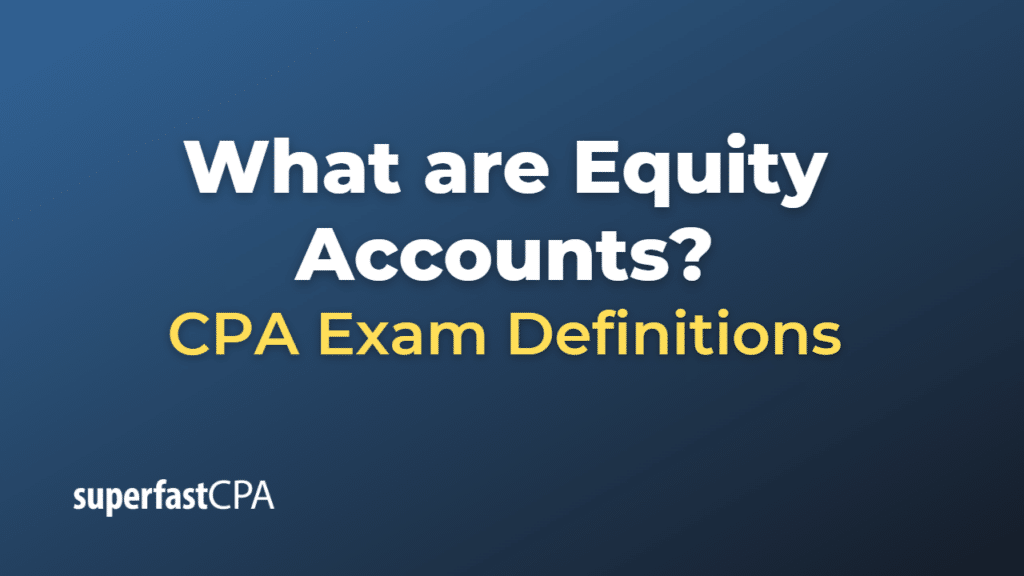Equity Accounts
Equity accounts represent the residual ownership of an entity (a business enterprise) that remains after deducting its liabilities. In short, equity accounts show the net value of a company, which is the value that belongs to the owners.
Here are some common types of equity accounts you might see on a company’s balance sheet:
- Common Stock: This account shows the par value (a nominal value assigned to the shares by the company) of all the common stock that the company has issued.
- Preferred Stock: This account shows the par value of all preferred stock that the company has issued. Preferred stockholders have a higher claim on distributions (dividends) and assets in case of liquidation than common stockholders.
- Additional Paid-In Capital (or Capital Surplus): This represents the amount of money that shareholders paid to the company for their shares of stock that was above its par value.
- Retained Earnings: This account shows the accumulated net income of the company that has been retained (i.e., not distributed to shareholders in the form of dividends) since its inception. It is reinvested in the company’s operations or used to pay off debt.
- Treasury Stock: This represents the company’s own stock that it has reacquired from shareholders. It’s often shown as a negative amount because it’s a contra equity account, effectively reducing total shareholder equity.
- Other Comprehensive Income: This account includes unrealized gains and losses on certain types of investments, foreign currency transaction gains or losses, and other items that are not included in the calculation of net income but affect the equity.
The specific equity accounts you will see can vary depending on the company’s structure, the type of business, the legal requirements in the country of incorporation, and other factors. All these equity accounts together represent the shareholders‘ claim against the company’s assets.
Example of Equity Accounts
Let’s consider a simplified example for a hypothetical company named “TechX Co.”
Imagine TechX Co.’s balance sheet shows the following under its equity section:
- Common Stock: $10,000. This represents the total par value of all the common stock the company has issued. Assume the company has issued 1,000 shares with a par value of $10 per share.
- Additional Paid-In Capital: $40,000. Let’s say when TechX Co. issued its stock, investors paid more than the par value. If each share sold for $50, the extra $40 per share ($50 paid minus $10 par value) would be recorded here.
- Retained Earnings: $30,000. Since TechX Co. started, it has made some profit but has not distributed all of it as dividends. The undistributed portion of the earnings is held in this account.
- Treasury Stock: -$5,000. Recently, TechX Co. bought back 100 of its own shares for $50 each. This is recorded as a contra account, reducing total equity.
So, to calculate the total shareholders’ equity, you would add up all the equity accounts, including subtracting the treasury stock:
$10,000 (Common Stock) + $40,000 (Additional Paid-In Capital) + $30,000 (Retained Earnings) – $5,000 (Treasury Stock) = $75,000 (Total Shareholders’ Equity)
In this example, the total shareholders’ equity of TechX Co. would be $75,000. This represents the shareholders’ claim against the company’s assets after all liabilities have been paid off.
Please remember that this is a simplified example. Real-world balance sheets of companies can be much more complex, with more accounts under the equity section, such as Preferred Stock, Accumulated Other Comprehensive Income, etc.













